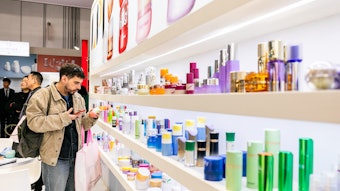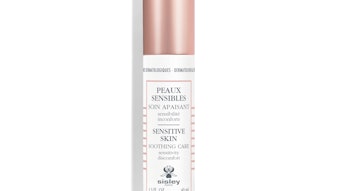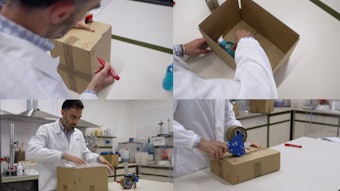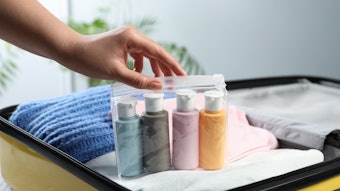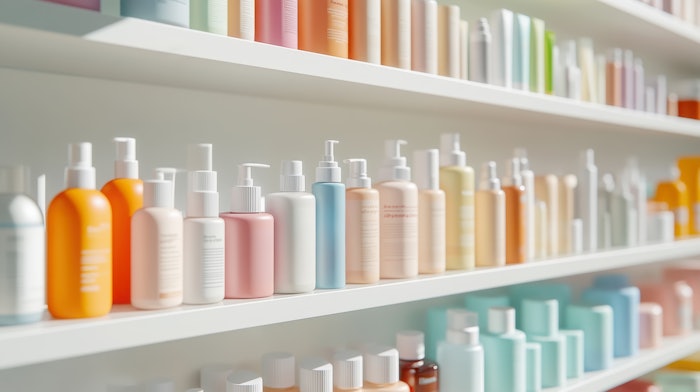
Luxury packaging in beauty and fragrance is continuing to evolve, with companies striving to create more advanced features to catch the attention of consumers. We've already seen an explosion of recyclable packaging solutions within the last few months, as more brands and companies continue to prioritize sustainability in their production and manufacturing processes. As the packaging industry continues to evolve and be influenced by the current economic environment in the U.S., packing in the industry is becoming more sleek and eco-friendly than ever before.
Advanced Innovations and Ideas
Innovations in Beauty Packaging Shaping the Future of Personal Care
The beauty industry is constantly evolving, responding to consumer demands for innovation, sustainability, and personalization. Packaging, often the first interaction a customer has with a product, plays a pivotal role in shaping the perception of a brand's values and the functionality of its offerings. With the global beauty and personal care market projected to exceed $104 billion in revenue by 2025, brands that prioritize cutting-edge packaging designs are positioned to gain a competitive edge.
This article explores how innovative packaging trends are reshaping the beauty industry and meeting the demands of environmentally conscious, tech-savvy consumers.
Why Packaging Innovation Matters in Beauty
Packaging has evolved far beyond its functional purpose of preserving a product. Today, it encompasses sustainability, aesthetics, functionality, and interactivity. Brands are now judged on their ability to reduce environmental waste, convey luxury, and provide a seamless user experience.
Key Considerations Driving Packaging Innovation:
- Sustainability: According to the Harvard Business Review in 2019a, nearly 65% of consumers are prioritizing environmentally friendly products, brands are innovating materials and production methods to reduce their environmental footprint.
- Inclusivity: Packaging design is moving toward accessibility, including tactile markers and clear labeling for diverse consumer needs.
- Brand Identity: Distinctive packaging not only differentiates a product on the shelf but also enhances its appeal on social media, driving higher consumer engagement.
- Technological Integration: Smart packaging solutions like QR codes and NFC-enabled containers are transforming how consumers interact with products.
The Consumer Shift Toward Sustainability
A growing emphasis on clean beauty and sustainable practices dominates the beauty market. According to Shorr’s 2025 Sustainable Packaging Consumer Reportb, which surveyed 2,016 American consumers, the impact is significant. Over half (54%) of respondents reported deliberately choosing products with sustainable packaging in the past six months.
Trends Shaping Beauty and Skin Care Packaging for 2025 and Beyond
Refillable Packaging Systems
 AIrlight Refill from Berlin Packaging.Berlin Packaging
AIrlight Refill from Berlin Packaging.Berlin Packaging
Examples in the Market:
- Lush offers refill stations for its packaging-free products, while their “naked” solid products eliminate packaging entirely.
- La Bouche Rouge has gained traction with its luxury refillable lipstick cases made from leather and recyclable materials.
- Berlin Packaging's AirLight Refill, the new collection of refillable airless packaging in a glass-free version made of recyclable plastics and post-consumer recycled PET, along with two new sizes of the Foamy line, the first glass foamer now also available in a travel-size version.
Why It Matters:
Refillable packaging not only cuts down on single-use plastics but also fosters brand loyalty by encouraging repeat purchases with reduced environmental impact.
Biodegradable and Compostable Materials
What It Is: Packaging made from materials such as plant-based polymers, bamboo, or mushroom mycelium that break down naturally without leaving toxic residues.
Examples in the Market:
- Skin care brand Tata Harper now offers biodegradable packaging for select products.
- Sulapac’s biodegradable packaging solutions are being adopted by multiple luxury brands.
- The Paper Stick from Cosmogen is one of the industry's first all paper packaging design solutions.
Challenges:
Scaling production and ensuring these materials perform on par with traditional plastics remains an industry-wide hurdle.
Minimalist and Compact Designs
What It Is: Packaging stripped down to its essentials, prioritizing sustainability without sacrificing design aesthetics.
Examples in the Market:
- Fenty Skin uses mono-material designs and eliminates excess components to reduce its environmental impact.
- Typology utilizes slim, recyclable aluminum tubes to minimize material usage.
The Consumer Perspective:
Minimalist designs resonate with younger demographics, particularly Gen Z and Millennials, who value authenticity and functionality.
Smart Packaging
What It Is: Integration of technology such as QR codes, AR overlays, and NFC chips into beauty packaging.
Examples in the Market:
- Hair care brand, Prose, uses QR codes to provide customers with bespoke product information and tips based on their hair profile.
- Revieve’s AR-tool-enabled packaging allows consumers to virtually try on products.
Benefits to Brands:
This trend not only enhances the consumer experience, but also provides valuable data for brands to tailor their offerings.
Luxurious yet Sustainable Aesthetics
What It Is: Achieving the look and feel of luxury without compromising sustainability.
Examples in the Market:
- Estée Lauder’s fully recyclable glass packaging incorporates chic metallic finishes using sustainable inks.
- Chanel unveiled biodegradable paper pulp containers for select products, marrying luxury and sustainability.
Customer Impact:
These solutions maintain the premium image of the product while addressing consumer concerns about excessive waste in luxury items.
Smart Packaging / New Dispensing Solutions
Nuon Medical Technologies has been at the forefront of integrating technology and packaging for skin and hair care applications for the majority of 2025. Recently, they showcased some new innovations at LuxePack New York, featuring new packaging devices with red light therapy that can be use in place of actives for skin care or hair care products. Nuon's production capabilities can help any brand or manufacturer find a unique way to deliver their products, all without costing them a fortune.
Exclusive Q&A with Amy Pan from Epopack on all the latest in beauty and personal care packaging
 Epopack
Epopack
Pan: Color trends are playing an increasingly strategic role in packaging design, especially as brands seek to create stronger emotional connections and category differentiation across skincare, color cosmetics, and fragrance.
Within the skin care sector, a discernible trend is the growing preference for soft, muted color palettes. This includes a spectrum of earthy neutrals, delicate pastels, and sophisticated frosted whites. It seems that these carefully selected shades are often intended to communicate key attributes associated with skincare, such as purity, tranquility, and the promise of a natural and gentle product experience. This trend appears to be closely aligned with core skincare values that consumers increasingly prioritize, including transparency in ingredients, an emphasis on overall wellness, and a desire for simplicity in their routines
- For color cosmetics, the packaging tends to be bolder and more expressive. Vibrant hues, metallic accents, and contrasting color stories are common, reflecting the playful, creative spirit of makeup. These choices are not just aesthetic—they speak to individuality, empowerment, and fun, capturing the dynamic energy of the category.
- In the fragrance space, colors are often used more symbolically to evoke mood or memory. Deep jewel tones, rich ambers, or minimalist black-and-white schemes can instantly convey sensuality, elegance, or sophistication. Here, color becomes part of the storytelling—intended to elicit an emotional response before the bottle is even opened.
- The application of color in packaging design has become an increasingly deliberate and sophisticated process. It serves not only as a visual differentiator that reflects the specific nature of the product category but also as a powerful tool to reinforce the brand's unique identity, deeply resonate with evolving consumer values, and ultimately create a specific and desired emotional impact at the point of purchase and beyond.
What advancements in printing and finishing techniques (e.g., embossing, foil stamping, unique textures) are being utilized to elevate the perceived value of luxury packaging?
Pan: It seems there's a move away from the high-shine metalization we often see on plastic, with a growing preference for real metal components. This shift appears to be driven by a desire for a more authentic and premium feel. Another notable trend is the increasing popularity of gradient spray coloring, particularly in skincare packaging. This technique offers a soft and elegant aesthetic. Techniques like embossing and debossing continue to be strong choices, as they add a tactile dimension that enhances the perceived value of the product. Additionally, matte printing is widely favored by brands looking to project a more low-profile and refined image. Matte surfaces are seen as modern and work well with subtle contrasting elements such as spot gloss or textured finishes.
Overall, the focus is on craftsmanship, understated elegance, and materials that align with both luxury and sustainability.
Challenges to Packaging Innovation
While these innovations lead to improved consumer engagement and environmental outcomes, brands face challenges such as:
- Cost: Advanced packaging solutions often require higher investment, which could reflect in product pricing.
- Supply Chain Disruption: Procuring sustainable materials on a global scale poses logistical hurdles, especially for fast-growing startups.
- Scalability: Smaller brands may struggle to implement high-tech or biodegradable options without the infrastructure of larger competitors.
Beauty and personal care packaging is not just a functional necessity; it’s a canvas for creativity, a vehicle for sustainability, and a touch point for emotional connection. With the beauty industry increasingly prioritizing clean and ethical practices, brands must strike a balance between aesthetic appeal, environmental responsibility, and consumer usability. Beauty companies should prioritize partnerships with material scientists, invest in R&D for scalable packaging solutions, and remain agile to adapt to emerging trends.
The next decade will belong to beauty brands that not only deliver exceptional products but also address the environmental and social concerns tied to their packaging. By aligning with consumer expectations and pushing the boundaries of innovation, beauty brands can redefine their role in fostering a sustainable future.



